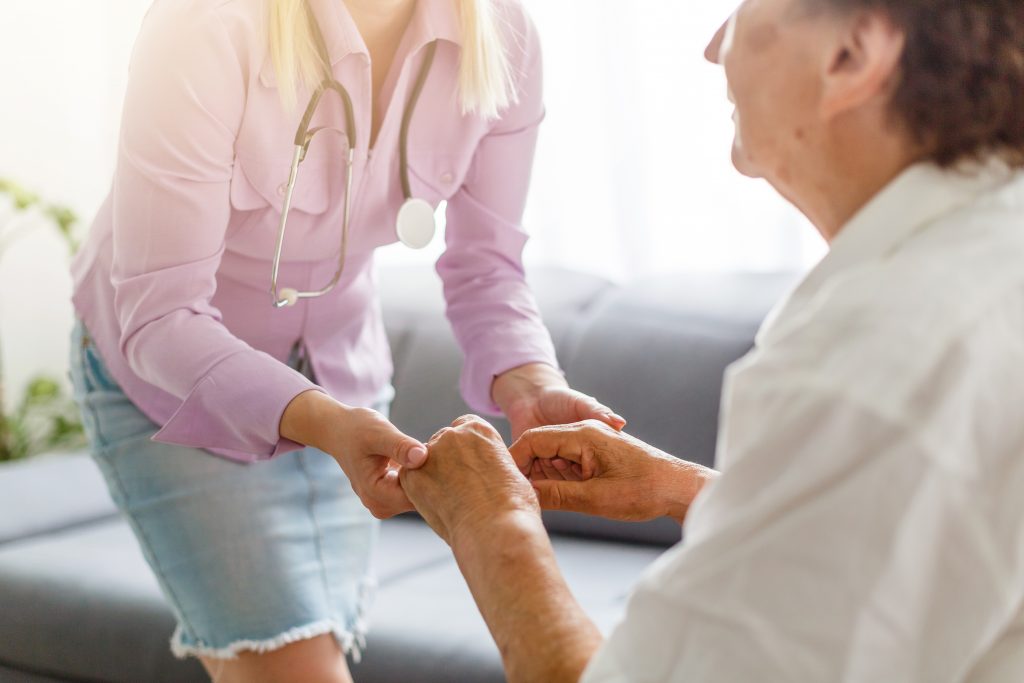
In our previous articles, we discussed the importance of analyzing comorbidity‐related fall risk, outlined our 24‐item survey, detailed the study’s methodology, and revealed key findings—an average 8‐point difference in total scores between those with fewer vs. more comorbidities. Now, it’s time to illustrate how these statistics translate into real‐world situations and lived experiences.
In this article, we’ll look at brief, anonymized “case vignettes” labeled as Patient 1, Patient 2, and Patient 3 to demonstrate the practical impact of lower (worse) scores and how having two or more chronic conditions can make everyday tasks a genuine challenge.
1. Patient 1: Arthritis + Diabetes
Profile:
- 72‐year‐old female, physically active in her 60s, gradually slowed by arthritis flare‐ups and type 2 diabetes.
- Lives alone, independent with occasional help from neighbors.
Score Reality:
- On our 24‐item survey, Patient 1’s total score was in the low 90s (somewhere between “Agree” and “Neutral” on key items).
- Key Struggle: Standing from a chair without arms. Arthritis pain in her knees often requires her to push up with both arms, limiting her confidence.
Implications:
- Fear of further joint stress leads her to avoid stairs, reducing physical activity and gradually weakening her muscles—creating a cycle that increases fall risk.
- A PT consult focusing on joint‐friendly mobility exercises and diabetic neuropathy management might help stabilize her balance.
2. Patient 2: Heart Condition + High Blood Pressure + Minor Vision Issues
Profile:
- 68‐year‐old male with a history of arrhythmia and persistent high blood pressure (on multiple medications).
- Mild vision impairment, especially in dim light.
Score Reality:
- Patient 2’s total score dipped into the mid‐80s, reflecting consistent challenges with nighttime navigation and stamina during daily activities.
- Key Struggle: Bending down to pick up objects and turning around quickly without losing balance. Dizziness occasionally flares when changing positions.
Implications:
- These “small” limitations lead to bigger anxiety about falling, so he avoids chores that involve bending or turning.
- Encouragement to use adequate lighting at night (nightlights, hallway lights) and a medication review for possible side effects (e.g., dizziness, low BP) may reduce his risk.
3. Patient 3: Multiple Conditions (4+)
Profile:
- 74‐year‐old female managing osteoarthritis, diabetes, mild COPD, and hypertension.
- Recently experienced a minor fall at home while pivoting from the couch to grab her phone.
Score Reality:
- Patient 3’s total score was around 82, strongly impacted by breathing difficulties (COPD) plus joint pain (osteoarthritis) that limit her ability to move quickly or confidently.
- Key Struggle: Walking up stairs or inclines, as fatigue sets in quickly.
Implications:
- She’s become more reliant on furniture and walls for support, inadvertently increasing her chance of a sudden slip.
- An occupational therapy home visit could help optimize layout, remove trip hazards, and establish safer daily routines.
Why These Stories Matter
Each of these patients’ lower survey scores pinpoints functional limitations that might not be obvious during a quick medical visit. Whether it’s fear of bending, dizziness from meds, or reduced stability due to chronic pain, these issues show how multiple comorbidities reinforce each other to degrade balance and heighten fall risk.
Beyond the Clinic
- Psychological Effects: Even minor falls or near‐falls can create a lasting fear, causing patients to retreat from activities that would actually help maintain their strength and balance.
- Caregiver Burden: Family members may not realize how these moderate ailments can collectively pose a high fall risk until something major occurs.
- Community Resources: Senior centers, low‐impact exercise classes (e.g., Tai Chi), and clinical coaching can help patients stay active and safer.
Next Steps
In Article 6, we’ll address practical applications—from screening protocols to early interventions—that healthcare teams can adopt, especially for patients like Patient 1, Patient 2, and Patient 3. Our hope is that, by pairing real‐life stories with our data, more clinics will see the value in proactive fall‐risk management.
Share Your Experience
- Have you or someone you know faced a similar combination of ailments making everyday movement a challenge?
- What strategies helped most in avoiding falls and maintaining independence?
We’d love to hear your thoughts—comment below or email us at researchinfo@ahcpllc.com. Your insights might spark creative solutions for patients across our network.
Posted by:
Dr. Pariksith Singh, Dr. Manjusri Vennamaneni, and Dr. Carlos Arias (Authors)
with Ed Laughman and Nawtej Dosanjh (Editors)
and Lynda Benson (Research Associate)
in collaboration with Access Health Care Physicians & Vedere University





